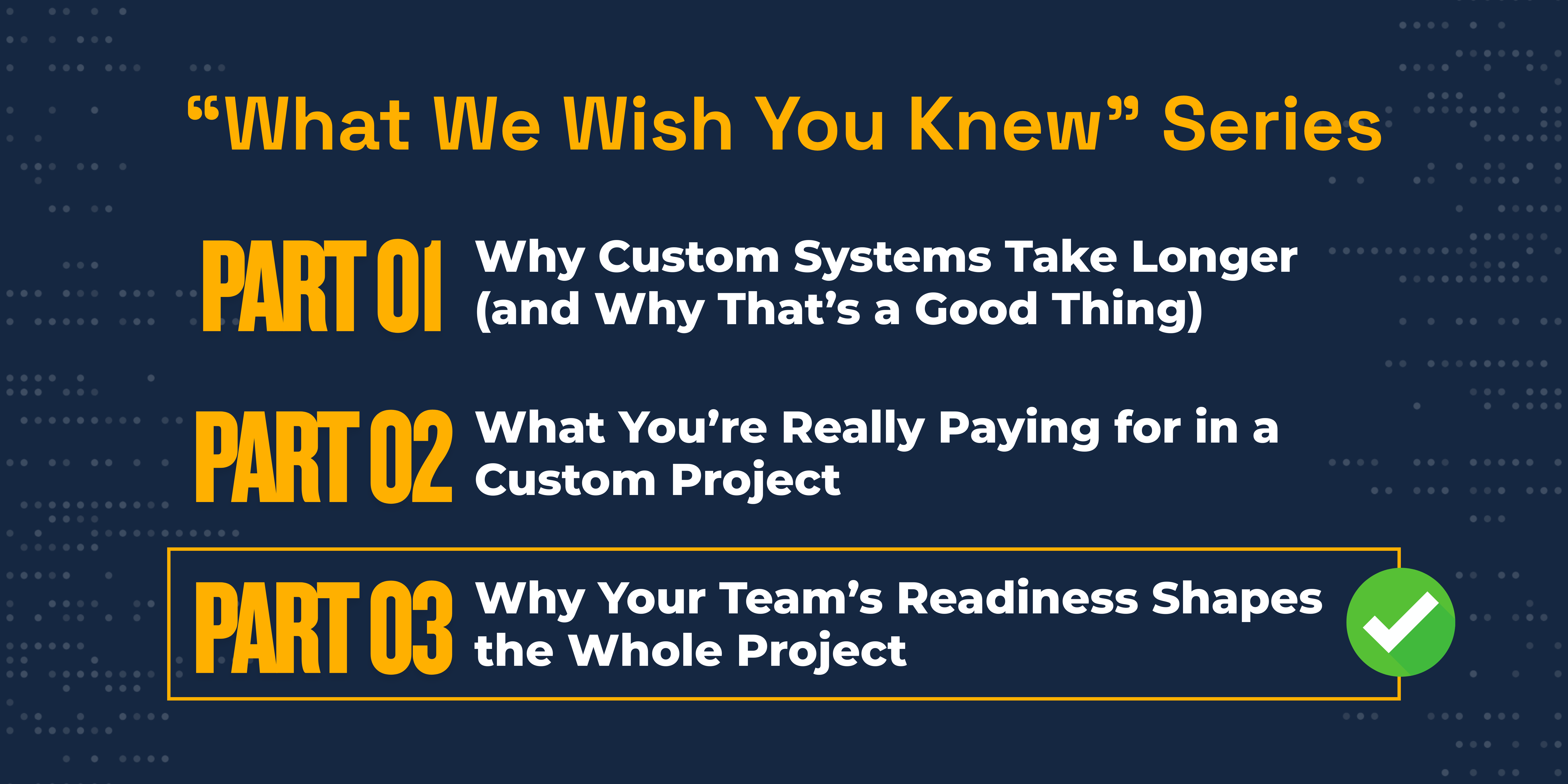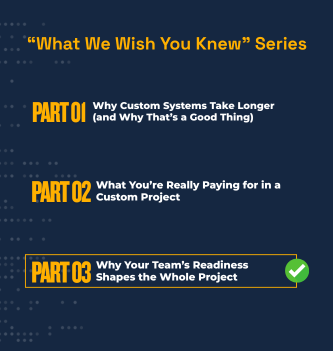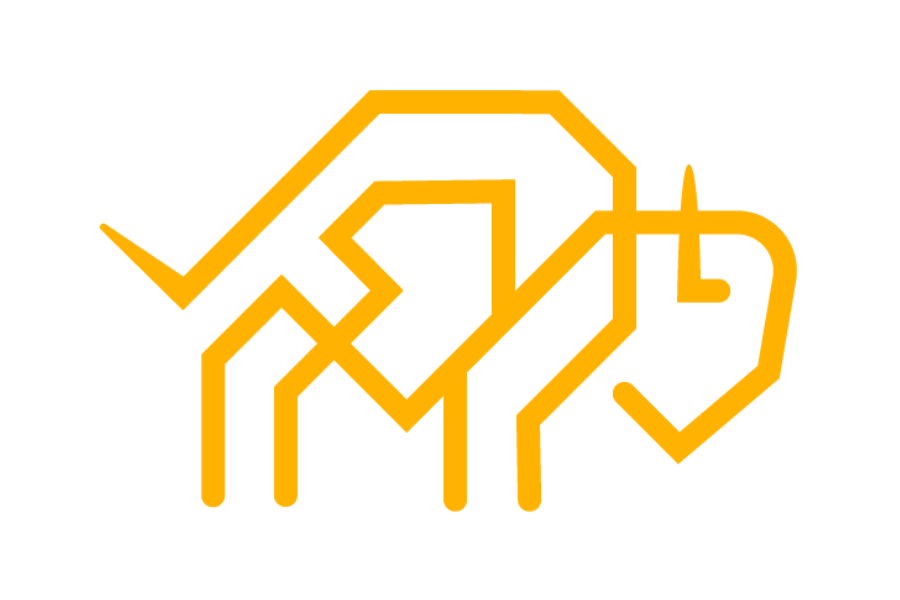

In the first two posts of this series, we looked at the factors that drive the success of a custom project.
Part 1 explored why custom systems take longer — and why that’s time well spent.
Part 2 unpacked what you’re really paying for in a custom project.
This final post focuses on the variable that ties it all together: your team’s readiness.
Every new system introduces change — in tools, workflows, and often in habits that have existed for years.
Readiness isn’t just about having capacity. It’s about having space to adapt.
When teams can participate fully in discovery, testing, and training, projects move smoothly. When competing priorities make that difficult, timelines often shift — not because the plan was off, but because the organization is processing change.
At Bizont, our job is to design timelines that reflect that reality. They’re intentionally grounded in what we’ve learned from past projects, leaving room for learning, adjustment, and collaboration.
Discovery works best when the people who live the process are part of the conversation.
Their insight shapes better decisions and prevents rework later. Shared understanding at this stage sets the foundation for everything that follows.
Development runs on feedback loops. Having clear points of contact and scheduled time for review keeps decisions moving. It doesn’t need to be constant — just consistent.
This is where technical readiness meets organizational reality. Testing new workflows, migrating content, and preparing teams to move from old systems to new ones all take time and focus. Readiness here means protecting time and setting expectations that meaningful participation will be needed.
We want every client and user of the systems we build to feel capable and confident — not dependent.
When teams understand the “why” behind their new tools and have the support to use them independently, adoption happens naturally. That’s why we include live training, tutorial videos, and guidebooks.
Readiness shapes outcomes because it’s the bridge between planning and reality.
Our role is to guide the process and keep it structured. The client’s role is to stay engaged, share context, and make space for decision-making along the way.
Readiness shapes results because it’s what turns a project from something built for you into something built with you.
Change management doesn’t need to be complicated. It’s simply about adaption to something new.
That’s why readiness doesn’t just influence a project, it shapes it.
If something in this post resonated—or sparked ideas—we’d love to hear from you.
If something in this post resonated—or sparked ideas—we’d love to hear from you.

Join our mailing list to receive fresh insights, stories and updates.